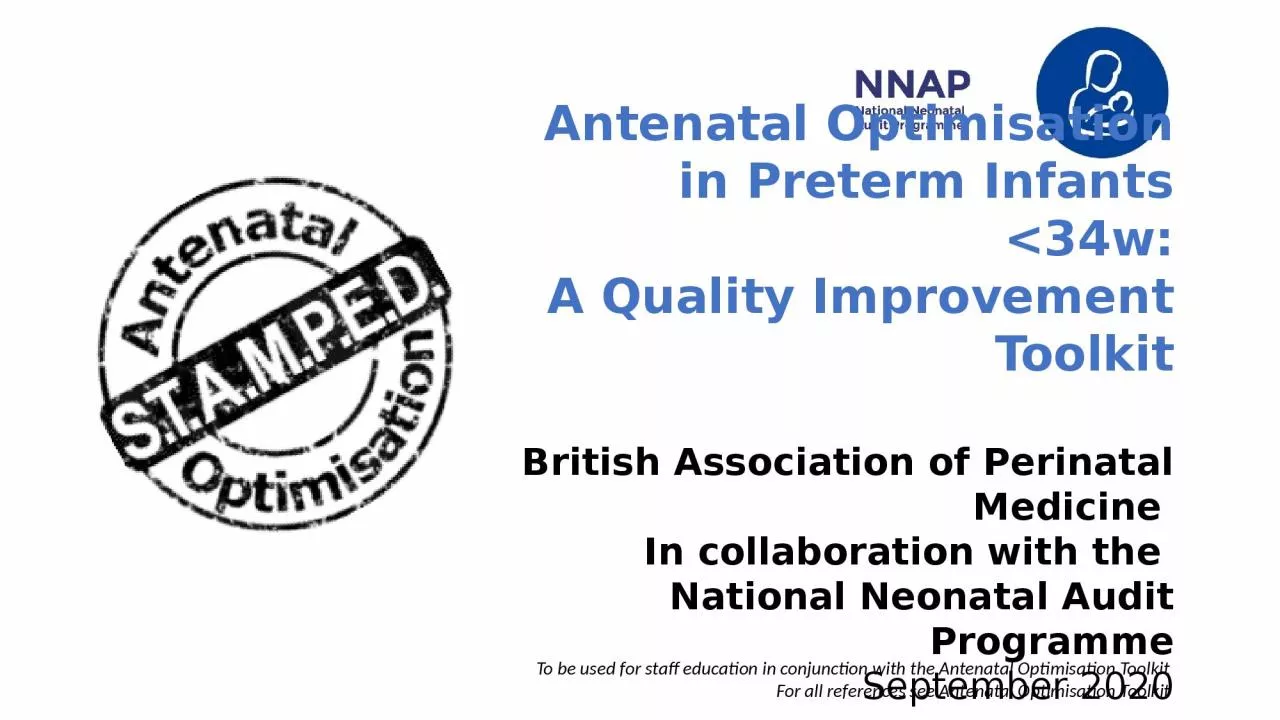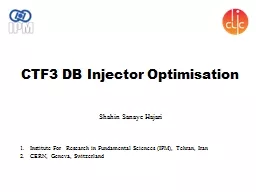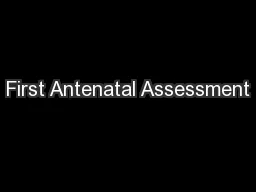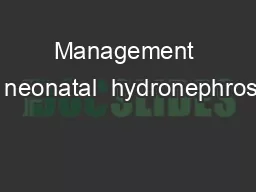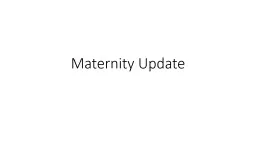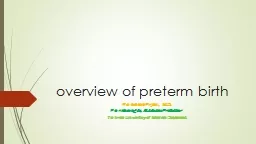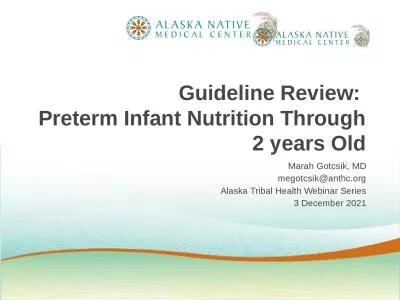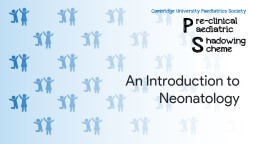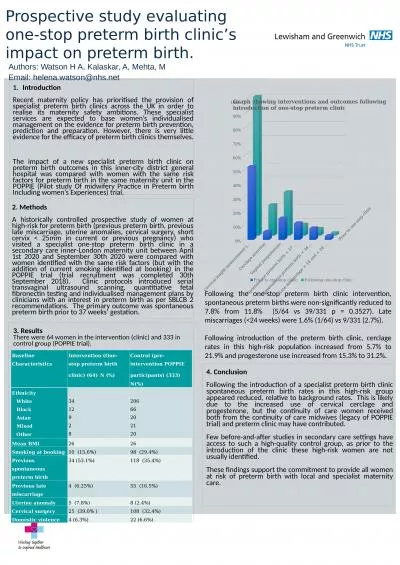PPT-Antenatal Optimisation in Preterm Infants <34w:
Author : BlueEyedBeauty | Published Date : 2022-08-02
A Quality Improvement Toolkit British Association of Perinatal Medicine In collaboration with the National Neonatal Audit Programme September 2020 To be used
Presentation Embed Code
Download Presentation
Download Presentation The PPT/PDF document "Antenatal Optimisation in Preterm Infant..." is the property of its rightful owner. Permission is granted to download and print the materials on this website for personal, non-commercial use only, and to display it on your personal computer provided you do not modify the materials and that you retain all copyright notices contained in the materials. By downloading content from our website, you accept the terms of this agreement.
Antenatal Optimisation in Preterm Infants <34w:: Transcript
Download Rules Of Document
"Antenatal Optimisation in Preterm Infants <34w:"The content belongs to its owner. You may download and print it for personal use, without modification, and keep all copyright notices. By downloading, you agree to these terms.
Related Documents

